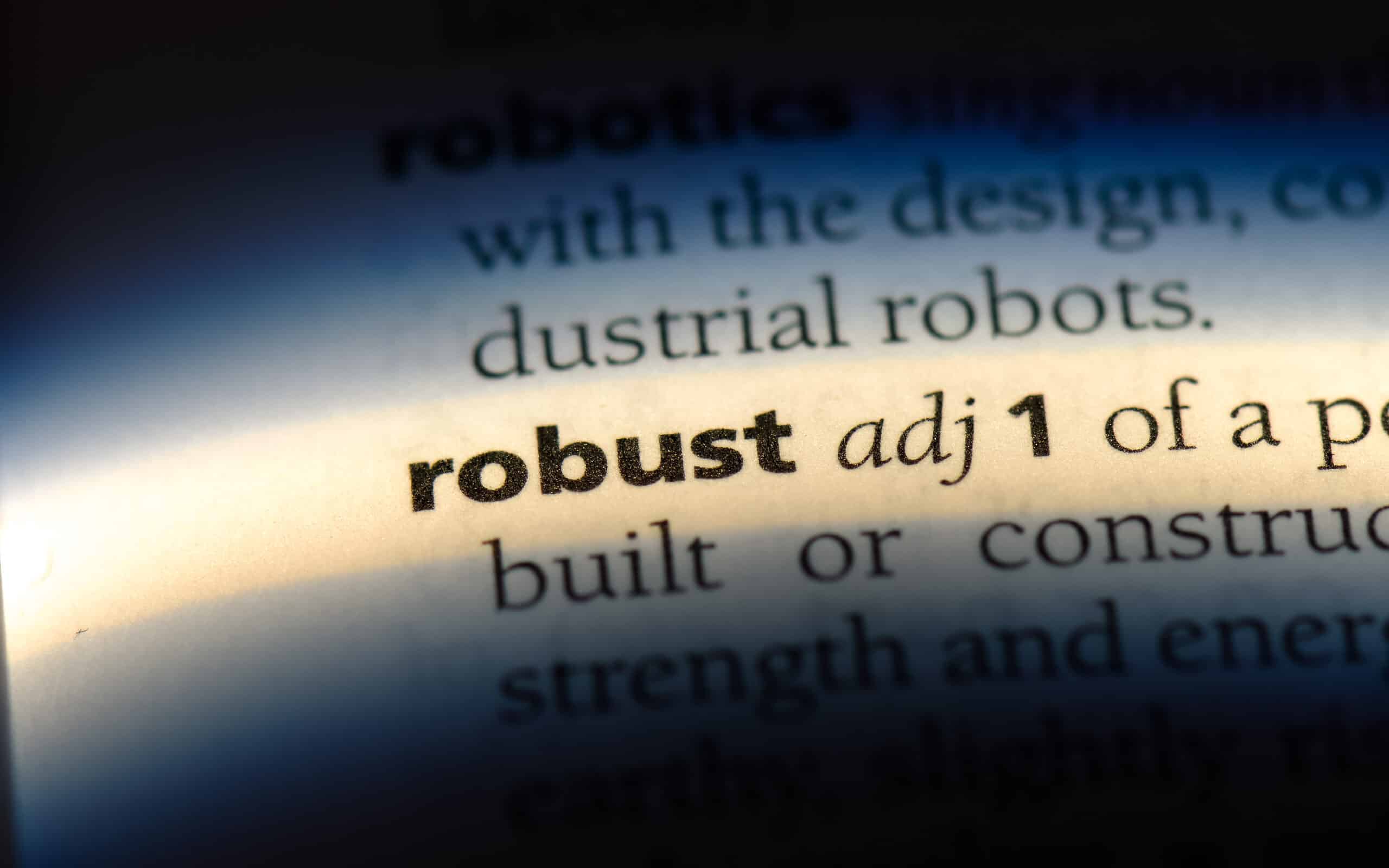
Having good products, processes, or quality control is admirable, but striving for robustness is optimal.
Getting your systems, operations, processes, or products up to a level where they are robust should be a goal of every organization that hopes to reach and stay at the Six Sigma level.
Overview: What is robust?
Robust refers to the ability to operate and perform effectively without failure despite a change in conditions or an alteration in variables.
3 benefits of robust
There are some clear benefits to robustness that should be noted:
1. Defecting resistance
When a process is operating robustly, it is at the Six Sigma level and is thereby resistant to defects.
2. Positive results
If operating at a robust level, positive results are occurring under a variety of circumstances.
3. Outliers
In robust statistics, any small departures or outliers do not have an effect.
Why is “robust” a term that is important to understand?
Robust is a term that is important to understand for the following reasons:
Faults
Having an understanding of robustness helps you recognize if your operations can stand up to faults or subsystems.
In research
Having a knowledge of the concept of being robust can help you work with a hypothesis that appears to continue to be supported despite changes in conditions.
Continuous improvement
Knowing the difference between good and robust gives you a sense of what level to strive for in your operations and systems to achieve Six Sigma.
An industry example of robust
A clothing company that specializes in outdoor wear is launching a new coat for the winter. The goal is to make the product as robust as possible. In order to achieve this, the prototype is tested under nearly every condition that the manufacturer can conceive of. The prototype is tested for how easily it can rip, how well it can perform in freezing temperatures and under intense heat, and for staying dry in storm-like conditions. After a barrage of tests for several months that are meant to simulate many years of use, the company feels confident that it is releasing a product of robust quality to the public.
3 best practices when thinking about robust
Here are some key practices to keep in mind when it comes to thinking about robustness:
The design process
In order to achieve robust performance levels, take steps during the design process to desensitize products to sources of variation.
Minimizing variability
Variability can be minimized through the control of processes as well as process and product design.
Some variability is uncontrollable or difficult to control
In the pursuit of robustness, some variability is likely uncontrollable or difficult to control. This difficult-to-control variability is known as noise, and the process or product should be made to be resistant to it.
Frequently Asked Questions (FAQ) about robust
What are some examples of robust design?
Some examples of robust design would be products that are designed to have a long shelf life, clothing that has been weatherproofed, and parts that are used as replacements that are near universal.
What is robust quality?
Robust quality is when there has been a reduction of deviations from the target values to the absolute minimum so that assurance of quality is maintained.
What are some synonyms for robust?
Some common synonyms for robust would be tough, sturdy, and powerful.
Robustness In Your Business
Achieving a level of robustness in any aspect of your business is not an easy task. It will take a lot of work, dedication to quality, and a culture of continuous improvement. It will also take a lot of attention to develop resistance to variability during the design process. This can be a tall order and could take a great deal of time, but your business will only improve along the way.